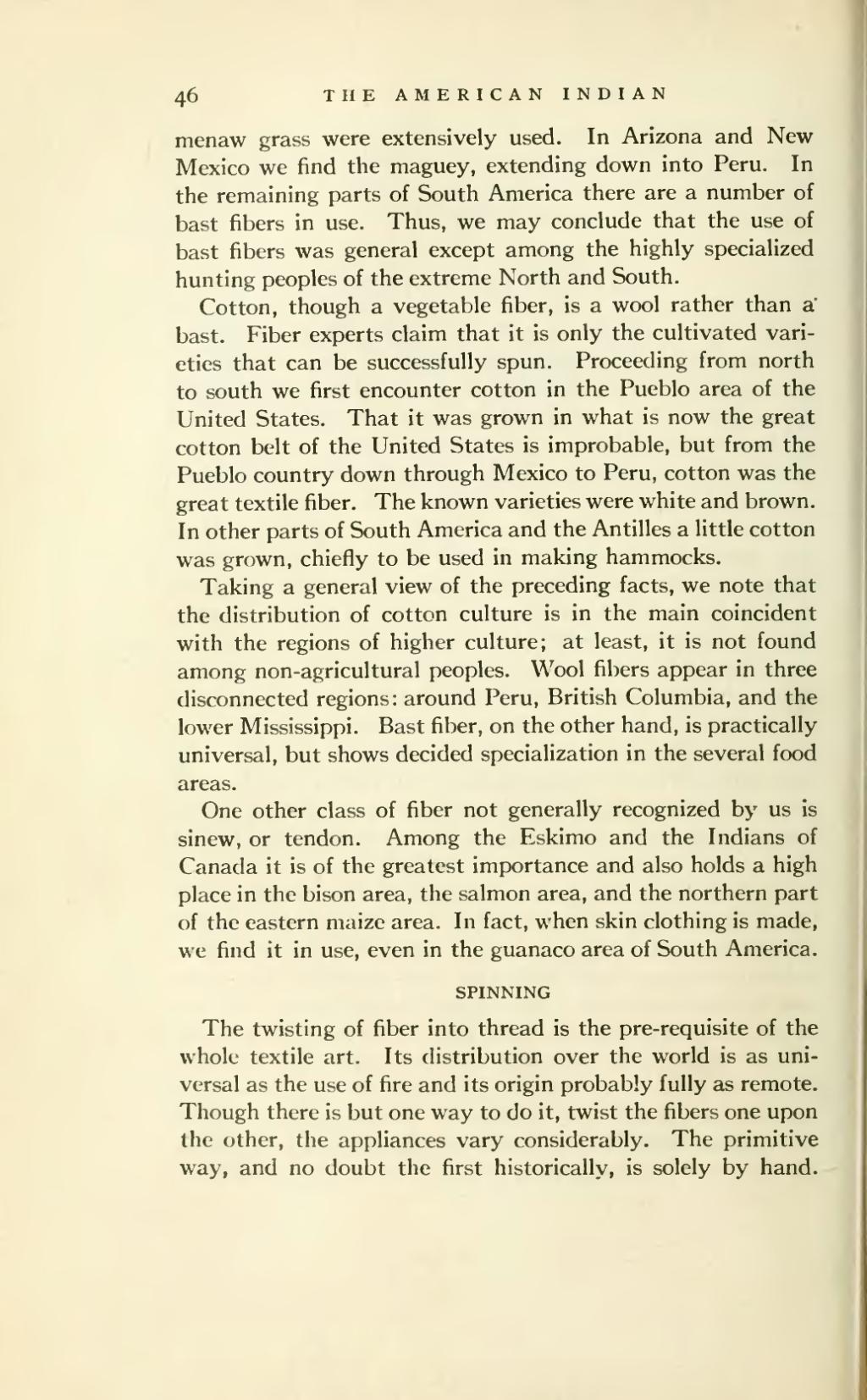menaw grass were extensively used. In Arizona and New Mexico we find the maguey, extending down into Peru. In the remaining parts of South America there are a number of bast fibers in use. Thus, we may conclude that the use of bast fibers was general except among the highly specialized hunting peoples of the extreme North and South.
Cotton, though a vegetable fiber, is a wool rather than a bast. Fiber experts claim that it is only the cultivated varieties that can be successfully spun. Proceeding from north to south we first encounter cotton in the Pueblo area of the United States. That it was grown in what is now the great cotton belt of the United States is improbable, but from the Pueblo country down through Mexico to Peru, cotton was the great textile fiber. The known varieties were white and brown. In other parts of South America and the Antilles a little cotton was grown, chiefly to be used in making hammocks.
Taking a general view of the preceding facts, we note that the distribution of cotton culture is in the main coincident with the regions of higher culture; at least, it is not found among non-agricultural peoples. Wool fibers appear in three disconnected regions: around Peru, British Columbia, and the lower Mississippi. Bast fiber, on the other hand, is practically universal, but shows decided specialization in the several food areas.
One other class of fiber not generally recognized by us is sinew, or tendon. Among the Eskimo and the Indians of Canada it is of the greatest importance and also holds a high place in the bison area, the salmon area, and the northern part of the eastern maize area. In fact, when skin clothing is made, we find it in use, even in the guanaco area of South America.
SPINNING
The twisting of fiber into thread is the pre-requisite of the whole textile art. Its distribution over the world is as universal as the use of fire and its origin probably fully as remote. Though there is but one way to do it, twist the fibers one upon the other, the appliances vary considerably. The primitive way, and no doubt the first historically, is solely by hand.
